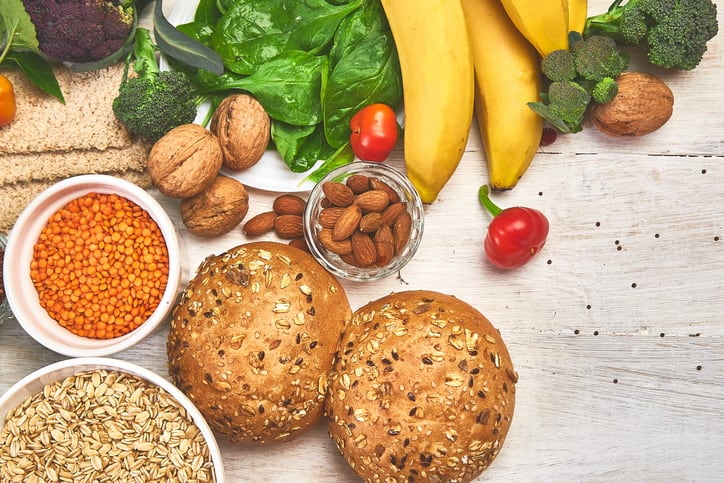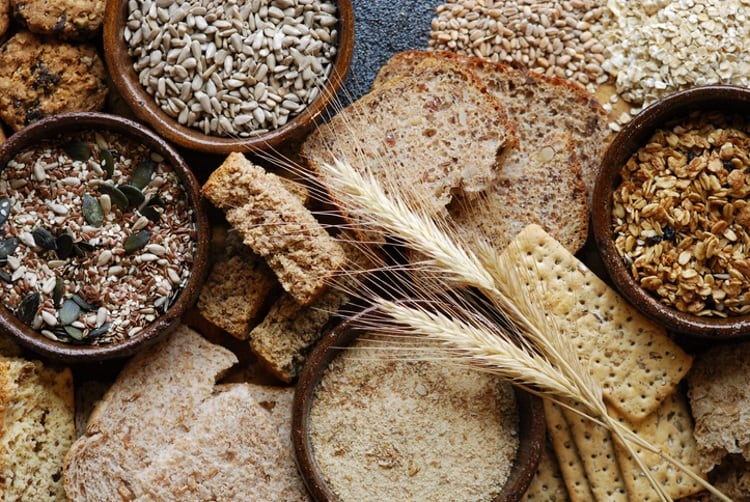Many UK adults do not get the recommended level of fibre in their diets. In fact, UK adults on average consume 19g of fibre per day. This figure is well below the recommended 30g of fibre per day, which only 9% of people currently reach.
New research from ingredient supplier Tate & Lyle, published in Cambridge University Press’ British Journal of Nutrition, found reformulating everyday foods with added fibre could reduce the risk of cardiovascular disease and type 2 diabetes for 72% of the UK adult population.
The modelling study saw scientists from Tate & Lyle work alongside specialist data analytics company Crème Global.
“Using mathematical models with real-world dietary data, Crème Global creates scenarios that are a powerful tool with which to assess the potential impacts of various interventions, such as an increase of fibre intake in the UK diet, as demonstrated in this project,” Cronan McNamara, Founder and CEO of Crème Global, explained.
The study suggested that fibre fortification efforts could also ‘more than double’ the number of children in the UK eating the recommended daily intake of fibre. It could also see 6% of the UK population benefit from weight loss through higher fibre consumption.
‘Fortification could play a beneficial role’
Low fibre consumption is associated with a number of negative health outcomes, including higher risk of colorectal and breast cancer, cardiovascular disease, and diabetes. Low fibre intake can also disrupt the gut microbiome.
“Most people understand that eating fibre helps keep bowel function regular, but fewer understand that getting the right amount of fibre in your diet is highly beneficial for wider health and wellbeing, including cardiovascular, immunity, skin, brain and gut health,” emphasised study co-author Dr Kavita Karnik, Global Head, Nutrition & Regulatory Affairs at Tate & Lyle.
According to Dr Karnik, one of the problems consumers face is the difficulty of eating enough fibre without also increasing calories consumed. Here, she believes fortification could play an important role. “For most people it is difficult to get enough fibre into their diet without exceeding their recommended calorie intake. This is where fibre fortification could play a highly beneficial role to public health – it would allow consumers to continue eating the products they prefer while potentially, lowering rates of cardiovascular disease, type 2 diabetes and help maintain a healthy weight across the population.”
Sara Stanner, Science Director at the British Nutrition Foundation, agrees that fortification offers an important lever to boost population health in the UK. “We know that we need diets to change to support better health but encouraging people to make sustained changes to their behaviour is notoriously difficult. This is where reformulation of the everyday products that people eat and drink can be really effective in improving nutritional intakes," she suggested.
“We have seen how reformulation has helped to reduce salt consumption and it’s important that the food industry continues to innovate to produce healthier products, in some cases reducing nutrients such as salt or sugar or by adding beneficial components such as fibre.”
FDF highlighting role of innovation in fibre fortification
Tate & Lyle has singed up to the UK Food and Drink Federation’s Action on Fibre initiative, which wants to help consumers bridge the gap between the fibre they eat and the recommended dietary intake. This, the project claims, would help improve gut health and cut the risks of NCDs like diabetes, heart disease and certain types of cancer.
FDF UK Diet and Health Policy Manager Amy Glass said the organisation hopes its efforts will highlight the role that innovation and product development can play in helping consumers get enough fibre in their diets.
“Reaching the daily recommendation is challenging, even if you eat the recommended 3three portions of starchy food and five portions of fruit and vegetables, this still falls short of the daily 30g fibre recommendation. FDF’s Action on Fibre campaign aims to highlight the vital role reformulation and new product development plays for food and beverage companies, giving consumers a wider range of products to assist them in hitting the target more easily,” Glass said.
Source
Estimating the potential public health impact of fibre enrichment: a UK modelling study
British Journal of Nutrition
DOI: https://doi.org/10.1017/S0007114521004827
Authors: Kirstie Canene-Adams, Ieva Laurie, Kavita Karnik, Brian Flynn, William Goodwin, Sandrine Pigat




